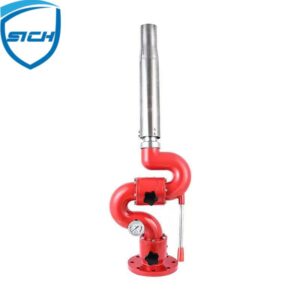Home » Posts tagged 'fire fighting foam equipment'
Tag Archives: fire fighting foam equipment
What are the maintenance and inspection requirements for fire fighting foam equipment?
The maintenance and inspection requirements for fire fighting foam equipment may vary depending on the specific type of equipment and manufacturer recommendations.
However, here are some general considerations:
Regular Inspections: Conduct regular visual inspections of the equipment to check for any signs of damage, wear, or corrosion. Inspect hoses, nozzles, valves, and foam proportioning systems for proper functioning and cleanliness.
Functional Testing: Periodically test the foam equipment to ensure it is working correctly. This may include activating the foam proportioning system, testing the foam concentrate delivery system, and checking the operation of foam generators or nozzles.
Foam Concentrate Storage: If foam concentrate is stored on-site, ensure proper storage conditions as specified by the manufacturer. This may include maintaining appropriate temperature ranges, protecting from direct sunlight, and regularly checking for expiry dates.
Foam Concentrate Quality: Regularly check the quality of the foam concentrate to ensure it meets the required specifications. This may involve conducting tests to verify the concentration, viscosity, and other relevant parameters.
Training and Certification: Provide training to personnel responsible for operating and maintaining the foam equipment. Ensure they are familiar with the equipment’s operation, maintenance procedures, safety protocols, and any applicable regulations or standards. Keep records of training and certifications.
Documentation and Records: Maintain accurate records of maintenance activities, inspections, tests, repairs, and any modifications made to the foam equipment. This documentation can help track the equipment’s history, ensure compliance, and aid in troubleshooting or future maintenance.
Manufacturer Guidelines: Follow the manufacturer’s instructions and recommendations for maintenance, servicing, and inspection intervals specific to the equipment. Manufacturers often provide detailed guidelines and schedules tailored to their products.
Professional Servicing: Depending on the complexity of the foam equipment, it may be necessary to engage professional technicians or authorized service providers for more advanced maintenance and repair tasks. Follow the manufacturer’s guidelines regarding professional servicing.
It is important to note that the specific maintenance and inspection requirements may vary for different types of foam equipment (e.g., foam proportioning systems, foam generators) and regional regulations. It is recommended to refer to the equipment’s operation and maintenance manual or consult with the manufacturer or a qualified fire protection professional for detailed guidance based on your specific equipment.
How is fire fighting foam equipment tested and certified for effectiveness and safety?
Fire fighting foam equipment is tested and certified through a combination of industry standards, regulatory requirements, and independent testing organizations.
The testing and certification process typically involves the following steps:
Compliance with Standards: Fire fighting foam equipment is designed and manufactured to meet specific industry standards and regulatory requirements. These standards define performance criteria, construction guidelines, and safety considerations for foam equipment. Examples of widely recognized standards for fire fighting foam equipment include NFPA 11, UL 162, and EN 1568.
Laboratory Testing: Foam equipment manufacturers conduct extensive laboratory testing to evaluate the performance, functionality, and safety of their products. fire fighting foam equipment These tests often include assessments of foam generation, foam expansion, foam stability, proportioning accuracy, and compatibility with various foam concentrates.
Certification Bodies: Independent certification bodies evaluate fire fighting foam equipment to ensure compliance with applicable standards and regulations. These organizations verify that the equipment meets the required performance and safety criteria. Examples of well-known certification bodies include Underwriters Laboratories (UL), FM Approvals, and VdS.
Field Testing: In addition to laboratory testing, foam equipment may undergo field testing to assess its performance in real-world fire scenarios. Field testing may involve evaluating the equipment’s effectiveness in extinguishing fires, its compatibility with different types of flammable liquids, and its operational reliability under varying conditions.
Quality Management Systems: Manufacturers of fire fighting foam equipment often have quality management systems in place to ensure consistent product quality and adherence to standards. These systems involve rigorous inspections, process controls, and documentation to maintain quality throughout the manufacturing process.
Compliance Documentation: Once the foam equipment has successfully undergone testing and certification, the manufacturer provides documentation to support its compliance. This documentation may include test reports, certificates, user manuals, installation guidelines, and maintenance instructions.
It’s important to note that different regions and jurisdictions may have specific requirements for the testing and certification of fire fighting foam equipment. Authorities having jurisdiction (AHJs) enforce these requirements and may conduct their own inspections and tests to ensure compliance with local regulations.
When selecting fire fighting foam equipment, it is advisable to look for products that carry recognized certifications from reputable testing organizations. These certifications provide assurance that the equipment meets essential safety and performance standards.
